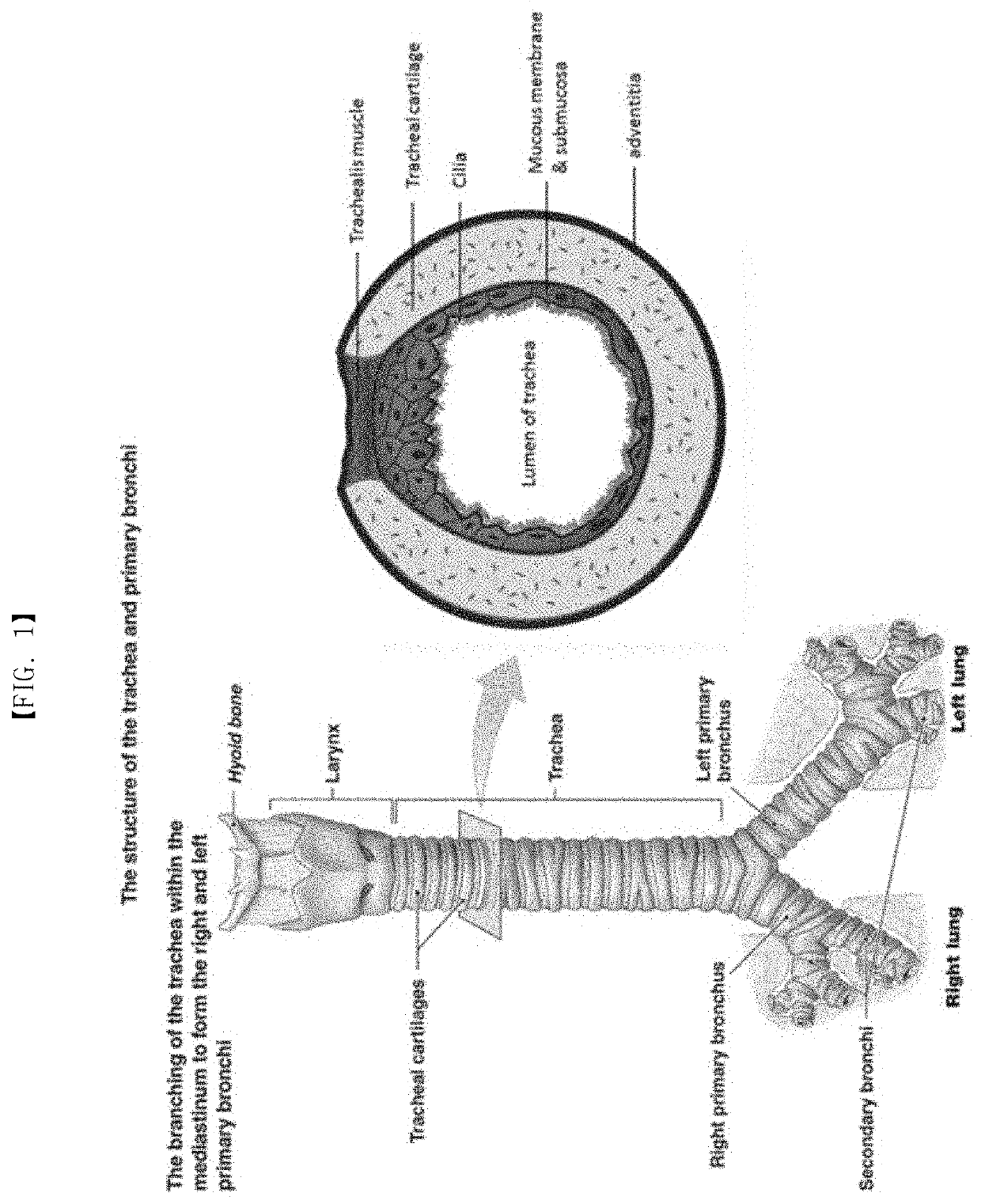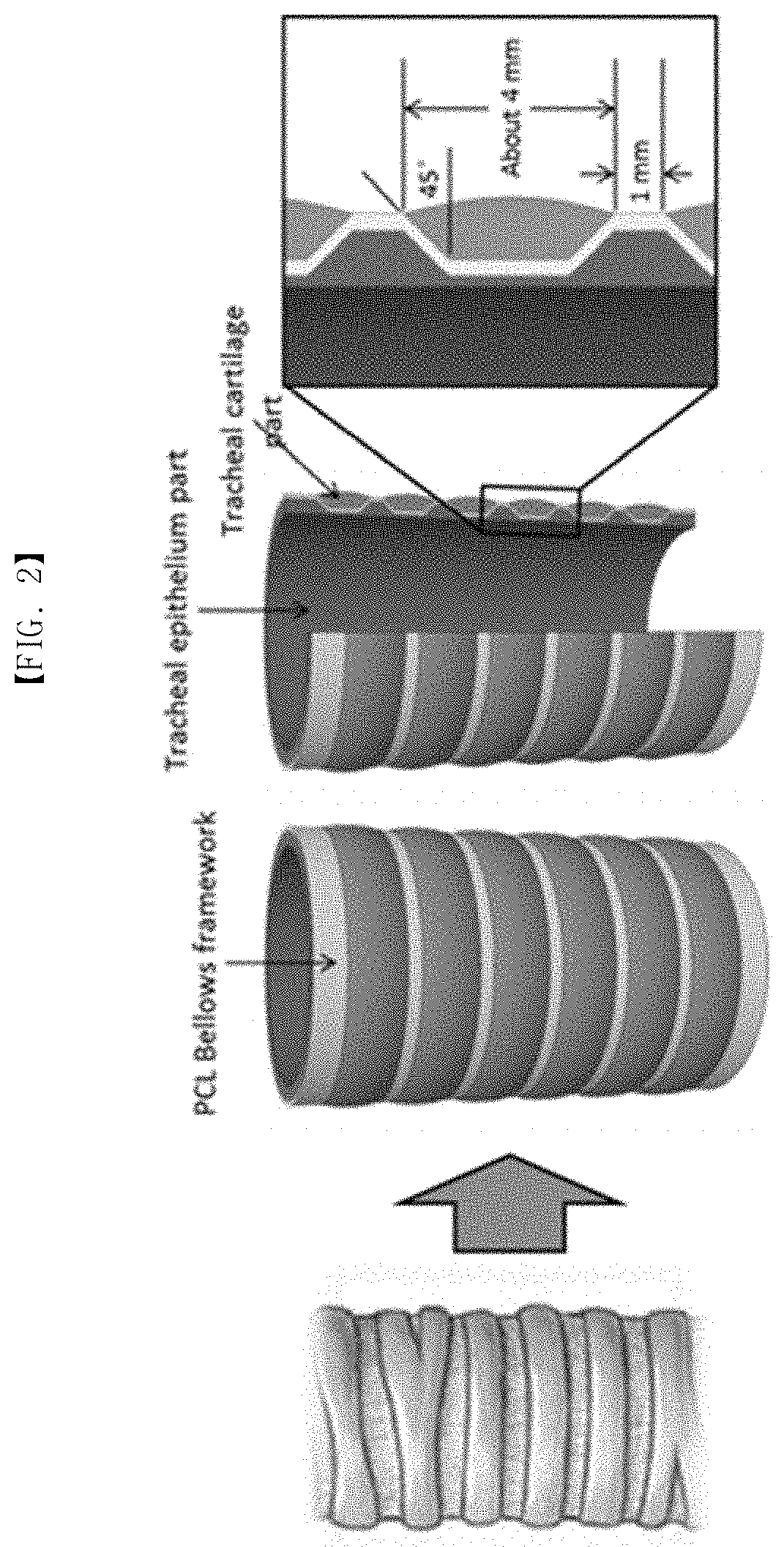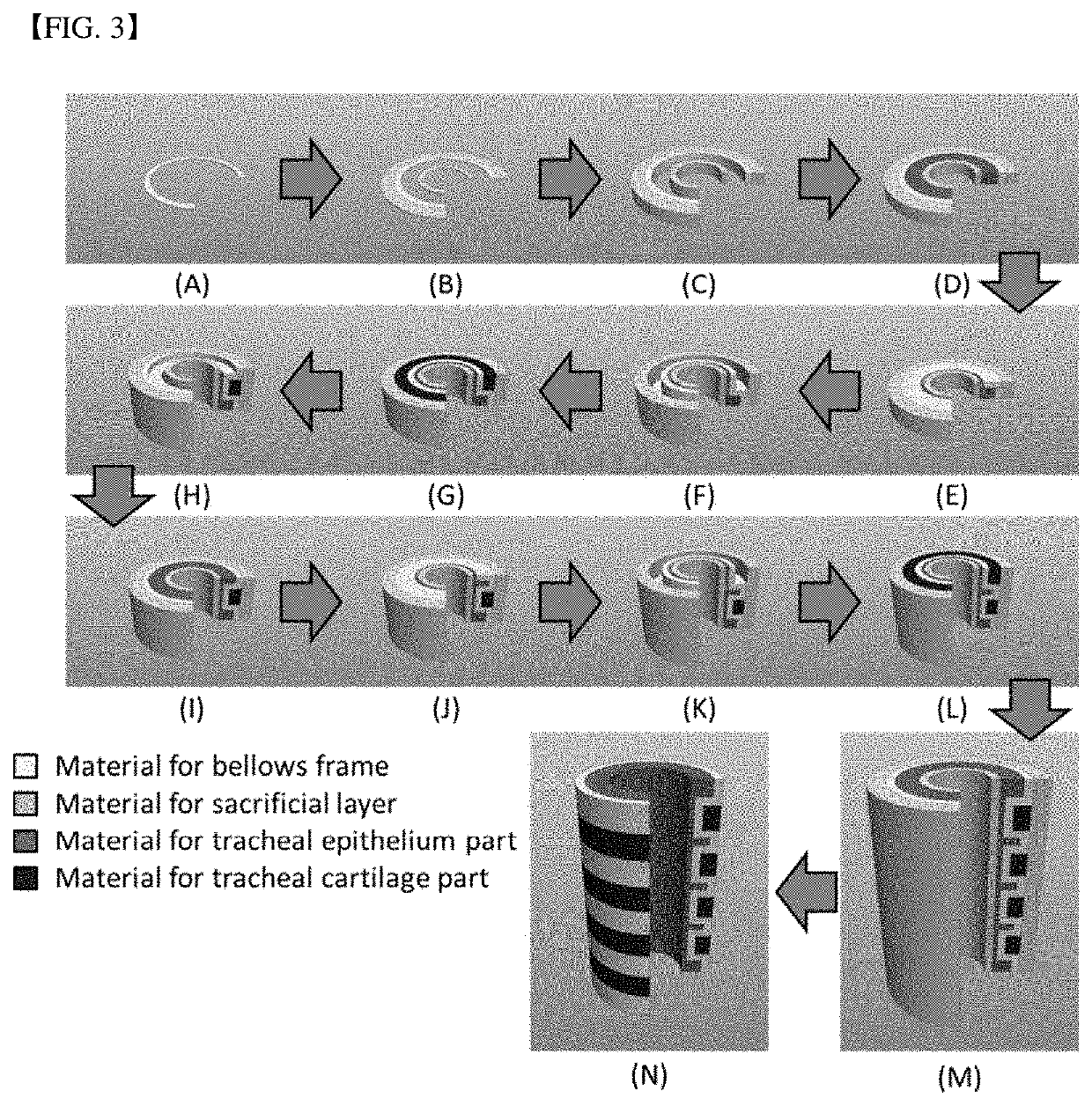Three dimensional tracheal substitute replacing respiratory organs and method of producing the same
a tracheal substitute and three-dimensional technology, applied in the field of tracheal replacement and a method of producing the same, can solve the problems of increasing the incidence of tracheal defects due to long-term intratracheal intubation, difficulty in daily life, and difficulty in application, so as to effectively secure the survival and function of the cells used, effectively maintain the stability of the patient, and minimize side effects
- Summary
- Abstract
- Description
- Claims
- Application Information
AI Technical Summary
Benefits of technology
Problems solved by technology
Method used
Image
Examples
example 1
onditions of Preparation of a Porous Bellows Framework
[0093]In the present invention, for preparation of a porous bellows framework, PCL was used. A certain amount (15˜1,000 mg) of PCL was loaded in a 10 cc stainless syringe in the inside of the dispensing head, and the syringe was heated to 65˜80° C., to melt PCL. The melted PCL was made to be dispensed through a metal nozzle (N20, inner diameter: 200 μm, Musashi Engineering) at the end of the syringe at an air pressure of 500 kPa. After fixing the height of PCL laminating to 100 μm (three layers in total), and the speed of dispensing PCL in sections A and C to 85 mm / min, the formation of pores was observed according to changes of the temperature of PCL, the distance of B section, and the transfer speed in this section (305, 405 and 505 mm / min) (FIG. 5).
[0094]As the result of the experiment, it was confirmed that the pores were formed best, when the temperature of melting PCL to 80° C., and the distance of B section to 600 μm, and ...
example 2
n of Structural Integrity of the Bellows Framework (Heating Treatment)
[0098]In the present experiment, a bellows framework was prepared using PCL, and the melting point of PCL was 60° C. Therefore, for heating treatment of the prepared bellows framework, the internal temperature of a vacuum oven (OV-11, JEIOTECH, Korea) was set to 60° C., and for heating treatment, the bellows framework was stored in the oven for 10˜30 minutes. After that, to evaluate the structural integrity of the bellows framework undergoing heating treatment under each condition, the three-point bending test was performed. In the three-point bending test, to apply bending to the bellows framework, it was conducted by supporting the convolution part at both ends of the bellows framework and pressing the central part between convolutions at both ends (the part in the middle of the bellows framework in a longitudinal direction). In addition, the size of load occurring by pressing the central part of the bellows fra...
example 3
n of Hydrophilicity of the Bellows Framework (Hydrophilicity Treatment)
[0100]When the bellows framework is hydrophobic, it is a great possibility that the printed epithelium part and cartilage part are separated from the bellows framework in the process of in vitro culture, and therefore, it is needed to increase the hydrophobicity of the bellows framework prepared with material 1 if needed. In the above Example 2, PCL was used in preparation of the bellows framework, and this material has the very high hydrophobicity. Thus, the hydrophilicity of the surface of the bellows framework was increased through a process of oxygen plasma treatment.
[0101]At first, considering the preclinical evaluation of the tracheal replacement (animal experiment using rabbit and dog), rectangular cylinder structures of two kinds of dimensions were prepared. In addition, the rectangular cylinder structures prepared using Plasma Cleaner (PDC-001, Harrick Plasma) were subjected to oxygen plasma treatment un...
PUM
| Property | Measurement | Unit |
|---|---|---|
| length | aaaaa | aaaaa |
| length | aaaaa | aaaaa |
| inclination angle | aaaaa | aaaaa |
Abstract
Description
Claims
Application Information
 Login to View More
Login to View More - R&D
- Intellectual Property
- Life Sciences
- Materials
- Tech Scout
- Unparalleled Data Quality
- Higher Quality Content
- 60% Fewer Hallucinations
Browse by: Latest US Patents, China's latest patents, Technical Efficacy Thesaurus, Application Domain, Technology Topic, Popular Technical Reports.
© 2025 PatSnap. All rights reserved.Legal|Privacy policy|Modern Slavery Act Transparency Statement|Sitemap|About US| Contact US: help@patsnap.com



